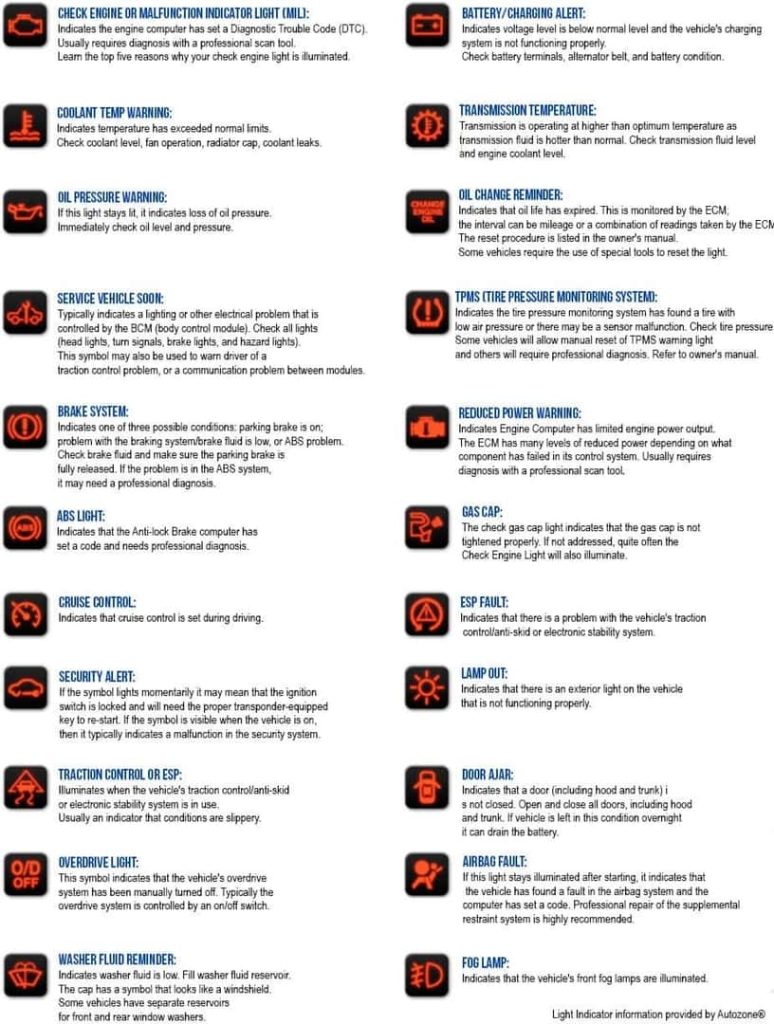

Recognizing warning signs of potential fleet vehicle issues is paramount for maintaining a safe and efficient operation. A seemingly minor problem can quickly escalate into significant downtime and costly repairs if not addressed promptly. This comprehensive guide will delve into the crucial early warning signals that can help prevent such scenarios. We’ll explore a range of potential issues, from simple maintenance needs to more complex mechanical problems. Understanding these warning signs empowers proactive fleet managers to minimize downtime, improve operational efficiency, and enhance safety standards. This guide is structured into sections covering common problems, diagnostic tools, and proactive maintenance strategies.
Identifying Common Warning Signs
Engine Performance Issues
Engine problems are a frequent source of disruption in fleet operations. A sudden drop in performance, unusual noises (knocking, rattling, or grinding), or difficulty starting are all red flags that warrant immediate attention. These problems can range from minor issues like a loose belt to more serious concerns like a failing engine component. Prompt diagnosis and action are vital to mitigate the impact on the entire fleet.
Unusual Vibrations and Noises
Unusual vibrations or noises, especially those occurring after a period of normal operation, could indicate a developing mechanical problem. Unusual noises, like screeching brakes or whining sounds from the drivetrain, should trigger an immediate investigation. This could include squeaking sounds during acceleration or braking; a grinding sound or unexpected changes in vibration patterns. A competent mechanic should be consulted to identify the source of these issues.
Issues with Braking System
The braking system is fundamental to fleet safety, making it an area requiring constant monitoring. Unusual pedal feel, a decrease in braking efficiency, or squeaking or grinding sounds from the brakes are all signs of potential trouble. Immediate inspection is needed to ascertain if brake pads, rotors, or other brake components are wearing out or if there are underlying mechanical issues. A proactive approach ensures that the braking system remains optimal for road conditions, preventing accidents and improving driving performance.
Implementing Effective Diagnostic Tools
Utilizing Diagnostic Scanners
Diagnostic scanners are a crucial tool for understanding the inner workings of fleet vehicles. They provide real-time data on various systems, allowing technicians to diagnose issues more efficiently and precisely. Scanners aid in identifying error codes, providing a detailed report of anomalies. Advanced scanners can analyze multiple vehicle systems simultaneously, significantly accelerating the diagnosis process. Utilizing this technology efficiently is a key factor in successful fleet management.
Visual Inspections
Thorough visual inspections are just as important as technical diagnostics. Inspecting tire treads, fluid levels (oil, coolant, brake fluid), and belts, along with tire pressure are all crucial areas to monitor for signs of wear or damage. A systematic approach to inspecting the vehicle’s exterior and interior systems can reveal potential problems that might be otherwise overlooked.
Utilizing Data Logging
Real-time data logging can offer insights into potential issues by recording performance metrics. Tracking key performance indicators allows you to analyze trends that could indicate upcoming issues. By analyzing patterns in the data collected, it becomes easier to predict maintenance needs, optimizing preventive measures before they lead to extensive downtime or safety risks.
Proactive Maintenance Strategies
Regular Maintenance Schedules
A well-defined maintenance schedule is essential for fleet management. Regular servicing, oil changes, tire rotations, and other scheduled maintenance tasks can significantly extend the life of vehicles and prevent unexpected breakdowns. Consistent maintenance minimizes the potential for major repairs down the line. By adhering to a structured schedule, fleet managers can reduce the likelihood of serious vehicle problems.
Vehicle Inspection Checklist
Developing a comprehensive vehicle inspection checklist is another valuable tool. The checklist should cover all critical components, including engine performance, fluid levels, braking systems, and electrical systems. This documented inspection provides a standardized approach to preventive maintenance, ensuring consistent quality control across the fleet. A systematic checklist facilitates a preventative approach, ensuring proactive problem identification.
Training and Communication
Empowering drivers with the knowledge to identify potential issues and communicating effectively with your maintenance team are key components of proactive management. Regular training sessions can help drivers learn to recognize the subtle warning signs of vehicle issues. This ensures effective communication between drivers and maintenance staff to address these issues quickly and efficiently. Proper communication protocols minimize delays in addressing problems. Driver feedback, relayed promptly through established channels, is a critical element in this process.
Case Studies and Statistical Data
Example 1: Company X
Company X had experienced significant increases in maintenance costs due to frequent breakdowns. By implementing a proactive maintenance program, including regular inspections, and standardized maintenance procedures, the company reduced these costs by 25% over a 12-month period. This demonstrates the significant financial and operational benefits of proactively addressing potential fleet vehicle issues.
Example 2: Data from Industry Reports
Industry reports consistently show a strong correlation between preventative maintenance and reduced downtime. Companies with comprehensive maintenance programs tend to have lower maintenance costs per vehicle. These data support the notion that early detection and timely maintenance are key factors for fleet efficiency.
Example 3: Fleet Vehicle Software
Implementing advanced fleet management software can assist in optimizing maintenance schedules by automating tasks, and centralizing data. This enhances efficiency, lowers administrative burdens, and provides real-time insights for decision making.
The Importance of Driver Awareness
Driver Training Programs
Thorough driver training programs can equip fleet drivers with the knowledge and skills to identify early warning signs of vehicle issues. By providing the proper tools and techniques, they can enhance their ability to mitigate potential problems. This comprehensive training is a key element in maintaining a safe and efficient fleet operation.
Communication Protocols
Establishing clear communication protocols between drivers and maintenance personnel allows for quick resolution of potential issues. Drivers should be encouraged to report any unusual noises, vibrations, or performance issues promptly. Clear communication is a cornerstone of proactive fleet management.
Road Safety Procedures
Implementing comprehensive road safety procedures can improve fleet efficiency by promoting safe driving practices, which directly contribute to the prevention of potential problems.
Additional Considerations
Environmental Impact
Maintaining vehicles in good working order through regular inspections and repairs can also reduce fuel consumption and emissions. A well-maintained vehicle is a fuel-efficient vehicle.
Compliance with Regulations
Adherence to vehicle maintenance regulations is critical to prevent safety hazards and legal issues. This ensures that all vehicles meet safety standards and regulations. Understanding and following regulations is essential for compliant fleet operations.
Technology Integration
Integrating technology into fleet management systems helps optimize scheduling, track maintenance history, and predict potential failures, promoting proactive problem solving.
Tools for Fleet Management
Fleet Tracking Software
Fleet tracking software allows managers to monitor vehicle locations, usage patterns, and driver behavior. This technology contributes to more efficient fleet management and improved driver safety, which can help proactively prevent potential problems.
Data Analytics
Leveraging data analytics helps identify potential trends and patterns, providing insights into maintenance requirements, and driving efficiency. This information empowers proactive strategies for fleet management.
Maintenance Management Software
Implementing maintenance management software enhances scheduling, tracks maintenance history, and helps predict potential failures. This data-driven approach enhances proactive decision-making.
Case Studies and Examples
Case Study 1
Fleet companies that have proactively implemented preventative maintenance programs have seen significant reductions in repair costs and downtime. A proactive approach optimizes fleet operations.
Case Study 2
Companies with comprehensive maintenance schedules experience fewer breakdowns and accidents. This helps minimize risk and financial losses.
Case Study 3
Proactive driver training programs result in higher levels of driver awareness, promoting safer driving and minimizing the chance of accidents or breakdowns.
In summary, recognizing the early warning signs of potential fleet vehicle issues is crucial for maintaining operational efficiency, minimizing downtime, and ensuring safety. By implementing proactive maintenance strategies, and fostering a culture of vigilance amongst your fleet management team, you can effectively prevent costly repairs and accidents. Investing in regular inspections and leveraging predictive maintenance tools is a sound strategy for mitigating risks and maximizing the lifespan of your fleet vehicles. Visit our website today for more information on preventative maintenance programs, and expert fleet management consulting.